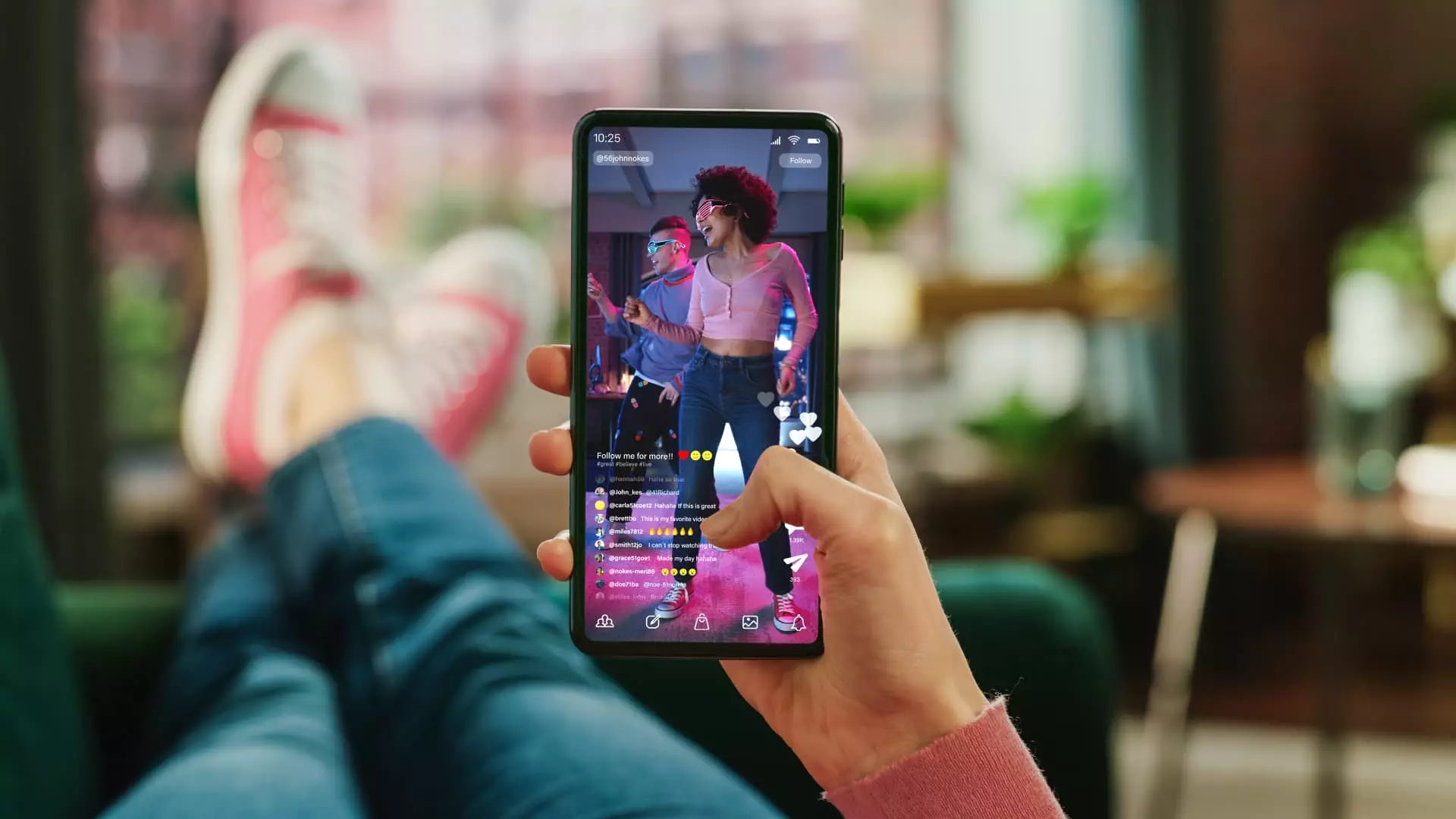Since its global introduction in 2016, TikTok has firmly entrenched itself as the leading platform in short-form video content, attracting more than 1.12 billion users worldwide. This staggering figure is not merely a statistic; it represents a cultural shift where TikTok has become the primary avenue for entertainment, trends, and even commerce, particularly among younger audiences. American users are consequently dedicating an average of 108 minutes each day to scrolling through the app, revealing an intense engagement that no competitor has yet managed to replicate effectively. This user dedication not only underscores TikTok’s significance but also raises critical questions about societal impacts like attention spans and mental health.
Competitive Responses and the Shift in Strategy
In the wake of TikTok’s explosive growth, traditional tech giants are scrambling to recalibrate their business models and strategies. Competitors like Meta and Google, both of whom dominated social media and video content previously, are racing to innovate their offerings. Meta’s Instagram introduced Reels, while Google unveiled YouTube Shorts, aiming to carve out their share of the short video pie. However, experts argue that these platforms, despite their extensive resources, struggle to match TikTok’s algorithmic finesse, which expertly curates content to individual tastes. Jasmine Enberg from Emarketer aptly puts it: TikTok is “where [young people] go for entertainment, news, trends, even shopping.” This statement highlights how deep-seated TikTok’s roots have become within young cultures, overshadowing platforms that once held varying degrees of cultural clout.
Challenges in the Era of Short-Form Content
While the proliferation of short-form content seems like a modern boon, there lurks an underbelly of psychological repercussions. Experts like Dr. Yann Poncin from Yale University draw attention to the alarming increase in anxiety levels and disrupted sleep patterns correlating with endless scrolling habits. Infinite scrolling and heavily algorithm-driven content aim to capture engagement in bite-sized formats, which can detract from the rich narratives that traditional media provided. The transformation from immersive storytelling to quick-hit engagement poses a significant risk to the mental well-being of users, particularly younger demographics who are still developing their cognitive and emotional frameworks.
The Monetization Quagmire
Despite TikTok’s scintillating user engagement, monetizing short-form videos remains a daunting task. In contrast to the long-form videos of platforms like YouTube, which can integrate multiple advertisements seamlessly, short clips are constrained by time. As a result, monetization for creators has become complicated and often unprofitable. In 2023, TikTok reportedly generated around $23.6 billion in ad revenue, yet many creators struggle to parlay viral moments into sustainable income. This paradox of high engagement yet low financial reward highlights a systemic issue within the short-form content ecosystem. YouTube Shorts has its own challenges, compensating creators at roughly four cents per 1,000 views—a stark contrast to the income potential of traditional long-form videos.
The Future of Social Media Spending
As scrutiny over TikTok’s Chinese ownership intensifies, casting shadows over its legitimacy in Western markets, competitors are eyeing a unique window of opportunity. If potential bans or restrictions on TikTok materialize within the United States, Meta and YouTube stand ready to capitalize—expected to capture up to 50% of ad dollars reallocated from TikTok. This impending shift could essentially redefine digital advertising landscapes, forcing brands to adapt to new norms dictated by whichever platform becomes the go-to for short-form content.
What remains evident is that TikTok has not just stirred the pot; it has boiled it over. Social media is in an ever-fluctuating state, and as TikTok continues to innovate and challenge traditional norms, we may witness a full-fledged metamorphosis in how users consume content and how platforms monetize it. The stakes couldn’t be higher as both creators and brands navigate this dynamic terrain, clinging to the question: Will anyone ever match TikTok’s allure?


Leave a Reply